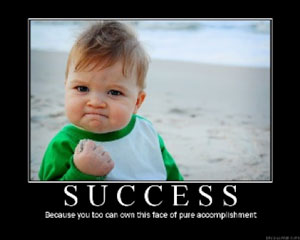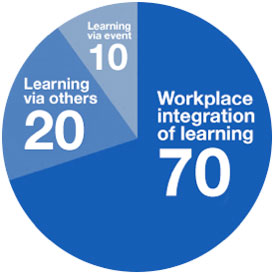The beginning of every year, usually late January or early February, the OAA (Opticians Association of America) brings all of the State Associations together for a Leadership Conference. Las Vegas was the meeting place this year from Feb. 5 – 7.
It was a fantastic meeting. There was a distinct air of change, moving forward, collaboration, and positive energy. Most reports and presentations were based on the question, "How might we...?" And the ones that did not respond accordingly stood out sorely. I left the meeting feeling energized knowing that opticianry is on the move. We are catching up, and we shall live up to our glorious past.
It was very exciting to hear the report from the Opticianry Summit Foundation. Starting with the first meeting in May 2012 the Summit's mission has been to create a shared vision for opticianry, a practical strategic plan and commitment to action.
Under the stewardship of Ed DeGennaro, Tom Barracato, Dianna Finisecy, Tom Hicks, Sam Morgenstern, Doug Pelke and Wesley Scott the foundation has fulfilled its purpose. The further development of the programs and projects created by the Summit will be handed over to the OAA for administration.
One of the Opticianry Summit's initiatives was to research the importance of refraction for opticians now and in the future. I got involved with this project about 2 ½ years ago, and set the following guiding definition for our mastermind group work.
A Mastermind Group is an ongoing gathering of individuals with a common goal who share ideas, strategies, and challenges with each other for the purpose of inspiring opportunities for the success of the mission. It's like a think-tank that combines networking, brainstorming, and operates with the understanding that sharing our experiences will allow us to explore "How might we" from many different angles.
And so the Refraction Mastermind Group was formed.
The shared interest of the group members is to advance opticianry into a bright future that matches its glorious past. Initially we researched the importance of refraction for opticians, and decided that refraction is part of the dispensing process, because it is the data that influences the creation of each pair of eyeglasses. We made a recommendation to the Summit Steward Team to tackle refraction for opticians as an education project. The Summit's wise decision was to make the first baby step with a 20-hour refraction course. What might that look like? The Masterminds got excited and elected to not just research, but create the education project. The development took about a year and the initial roll out happened at the OAA Leadership conference in Las Vegas earlier this month.
Refraction for opticians by opticians is designed for the ABO/NCLE and/or State licensed optician who seeks a higher level of competence. It is the first step on opticianry's path to new skill sets that will serve patients now and in the future. Opticians who go through the program will have an understanding of the art of refraction, be able to analyze a prescription, document the findings, make recommendations, and communicate effectively with the patient and other ECPs.
How does it work?
Refraction for opticians by opticians is based on four principles:
1. Inspiration
A little inspiration at different points in our lives - to lift us up from our routine, help us meet life's challenges and push us towards our potential.
Inspiration can give us vision - opening windows to new possibilities. Refraction for opticians by opticians is intended to inspire opticians to learn more, and stop being afraid of what could go wrong and think about what could go right.

2. Motivation
Motivation is always connected to the accomplishment of goals. Success stories of opticians who have acquired more knowledge are part of the curriculum and as result are more effective opticians and achieve a higher level of job satisfaction.
3. Education
We are adding a skill set for opticians to perform analysis functions and become valuable partners in the eyecare delivery system. The educational elements are:
- Ethics
- Theory
- Light Theory
- Ocular Anatomy
- Refractive Errors
- Spectacle Rx
- Hands-on workshops
- Retinoscopy
- Refraction
- Refinement
- Final Exam

4. Implementation in the workplace
The way we learn happens according to the 70:20:10 principle—10 percent in the classroom, 20 percent from coaches, 70 percent on the job training. Refraction for opticians goes beyond the classroom training by coaching opticians how to implement the newly learned material in the workplace.
Refraction for opticians by opticians is now in its implementation phase. Its success will depend on each one of us. Can we wrap our minds around needing more education to serve our patients in the 21st century?
It takes a village...

Maggie Sayers is a professional development coach and a Master Optician. Her optical career started over 30 years ago in a family business in Germany.
Since she came to Florida in 1987, she has worked diligently to promote high professional standards in opticianry. Her mission is to help opticians achieve their personal success through serving the public as vision experts.
As a professional development coach Maggie provides education workshops that focus on leadership and personal engagement. Her time management course has inspired many participants to think outside the box, apply newly acquired knowledge and achieve extraordinary results.
Maggie's enthusiasm for opticianry is inspiring and her keen business sense paired with excellent communication skills make her a highly sought after motivational speaker.












